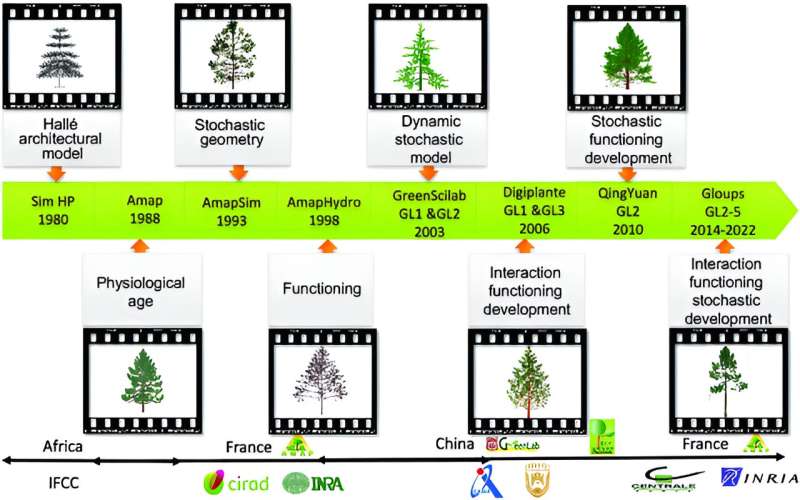This article has been reviewed according to Science X's editorial process and policies. Editors have highlighted the following attributes while ensuring the content's credibility:
fact-checked
proofread
Pioneering agricultural resilience and sustainability in the face of climate change

With climate change and growing global populations posing increasing threats to food security, the quest for agricultural sustainability and the resilience of crop yields becomes paramount. Current research strategies focus on genetic improvements to cultivate crop varieties better suited to these changes, alongside refining crop management practices to enhance resource efficiency.
These efforts are supported by crop models, vital tools for simulating the genetic, environmental, and management (G×E×M) factors affecting crop growth. Among these models, the GreenLab model stands out for its detailed organ-level simulations, incorporating physiological and morphological responses to environmental conditions. However, despite its sophistication, the GreenLab model simplifies environmental impacts into a single factor, inadequately capturing the nuanced effects of climate, soil, and management practices on yield.
In February 2024, Plant Phenomics published a review article titled "Functional–Structural Plant Model 'GreenLab' : A State-of-the-Art Review." The paper provides a comprehensive overview of the GreenLab model, delving into its developmental history, fundamental concepts, main theories, applications, software tools, and future directions.
Originating from the AMAP modeling approach, GreenLab integrates botanical concepts like physiological age and source–sink dynamics, laying a robust foundation for simulating plant growth in accordance with botanical principles.
Over two decades, collaboration between institutes in China and France has refined GreenLab into a sophisticated model that simulates plant growth at the organ level, accommodating various plant types from herbaceous species to trees.
The model's evolution from deterministic to stochastic versions has expanded its utility, enabling it to simulate diverse growth patterns and architectural complexities with remarkable accuracy. By incorporating concepts from process-based models, GreenLab offers detailed simulations of biomass production and allocation, leveraging mathematical equations for efficient parameterization and simulation.
It stands out for its ability to model the dynamic interaction between development and growth, capturing the nuanced effects of environmental factors on plant structure and yield.
Applications of GreenLab span across different plant species, demonstrating its versatility in simulating growth patterns of both field and horticultural crops, as well as trees, under varying environmental conditions. The model's calibration process, involving detailed plant architecture and biomass data, underscores its precision in simulating plant growth.
Moreover, GreenLab's integration with advanced technologies like speed breeding and artificial intelligence heralds a new era of crop modeling, enabling rapid phenotyping and yield prediction to support sustainable agricultural practices. The software tools developed for GreenLab, from Visualplant to XPlantGL, facilitate user-friendly simulations and calibrations, making it accessible to researchers and practitioners alike.
Looking forward, the paper highlights the model's potential in bridging genetic, physiological, and environmental research, offering insights into crop adaptation strategies and optimizing yield predictions. Through continuous development and integration with cutting-edge technologies, GreenLab remains at the forefront of agricultural modeling, promising innovative solutions to the challenges of food security and climate change.
More information: Xiujuan Wang et al, Functional–Structural Plant Model "GreenLab": A State-of-the-Art Review, Plant Phenomics (2023). DOI: 10.34133/plantphenomics.0118
Provided by TranSpread





















